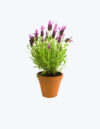-
 Geum triflorum
Quantity: 1 £5.99
Geum triflorum
Quantity: 1 £5.99 -
 Caryopteris
Quantity: 1 £9.99
Caryopteris
Quantity: 1 £9.99 -
 Agastache
Quantity: 1 £5.99
Agastache
Quantity: 1 £5.99
Subtotal : £21.97






 Full sun
Full sun




Reviews
There are no reviews yet.